In sea-cage trials, BSFL meal can be included at up to 10 percent in commercial salmon feeds, replacing plant protein sources without affecting fillet water losses, texture or color
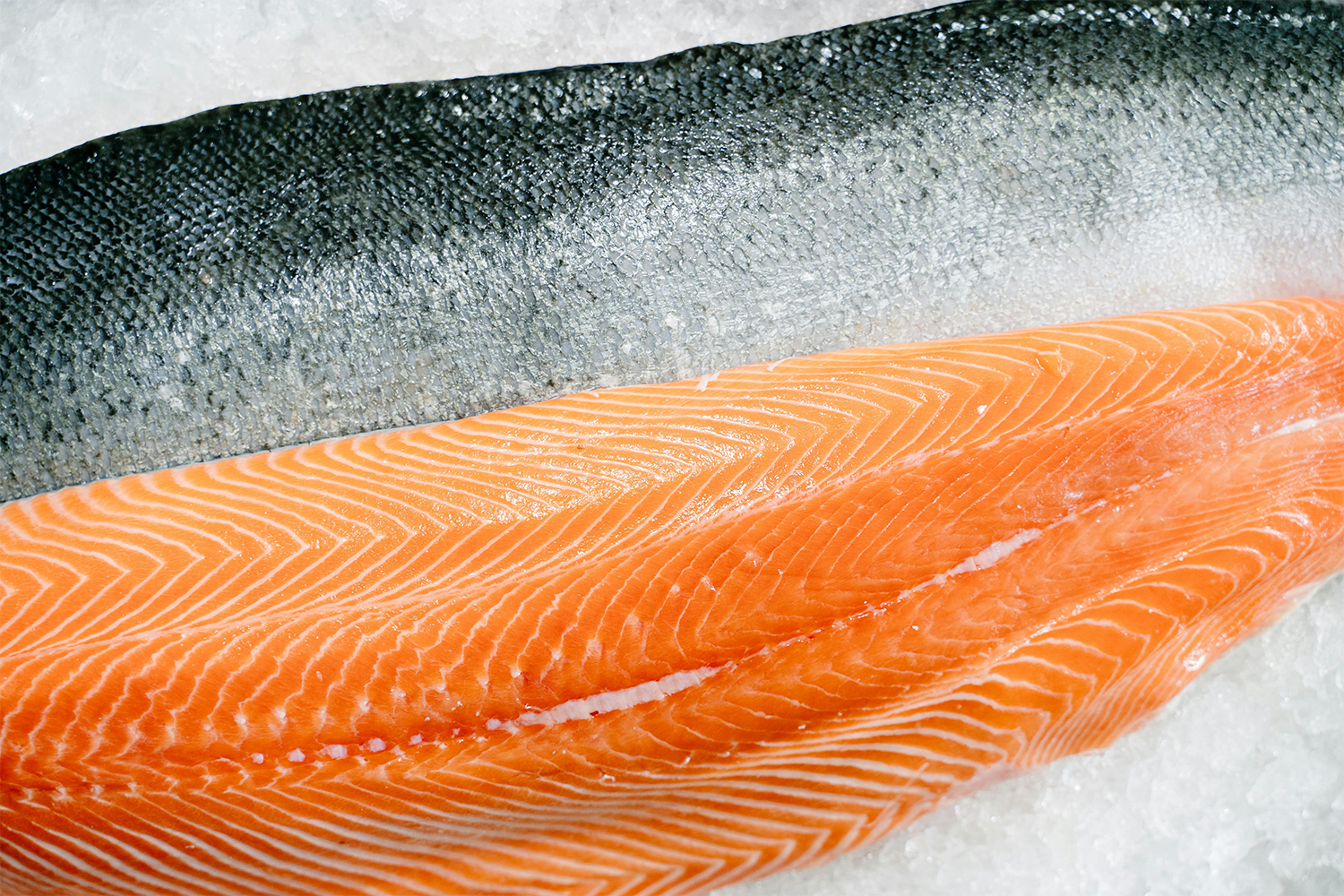
Atlantic salmon (Salmo salar) has a high market value and its elite image is due to its characteristic red-to-pink fillet color, significant protein levels, long-chain polyunsaturated fatty acids, minerals and vitamins. Hence, the production of a high-quality fillet is a crucial aspect of salmon aquaculture, as it can directly affect the nutritional quality, consumer preference and market value of salmon.
The quality of salmon fillets is affected by the feed composition. Farmed salmon producers strongly rely on the utilization of multiple ingredients to produce an adequate quality feed. Traditionally, fishmeal and fish oil are the major ingredients in a typical Norwegian salmon feed. However, the rapid growth in aquaculture and limited availability and sustainability issues of many ingredients has led to changes in salmon feed formulation and manufacturing.
Efforts have been made to reduce and/or replace fishmeal through the inclusion of alternative sources of ingredients from terrestrial plants, animal byproducts, microalgae, macroalgae or insects into salmon feed. Various studies have reported that inclusion of alternative ingredients such as krill meal, microalgae and their levels in feed can influence the physical, chemical, nutritional and sensory properties of salmon fillets.
Among the suggested alternative ingredients, the black soldier fly larvae (BSFL) (Hermetia illucens) has drawn global attention as an alternative for replacing some of the traditional protein sources (e.g., fishmeal or soy protein) in aquaculture feeds due to its favorable protein levels (∼40 percent of dry weight) and suitable amino acid profile. This insect has a fast growth rate and short rearing time and can convert food waste into protein and fat for animal feed, making it a good fit into the circular economy strategy. However, to date no study has explored how BSFL-based diets affect salmon fillets when included in a commercial diet for a long term and exposed to sea farming challenges.
This article – summarized from the original publication (Radhakrishnan, G. et al. 2024. Evaluating the fillet quality and sensory characteristics of Atlantic salmon (Salmo salar) fed black soldier fly larvae meal for whole production cycle in sea cages. Aquaculture Reports Volume 35, April 2024, 101966) – presents the results of a study to assess the effect on salmon fillet quality and sensory characteristics when BSFL meal is included at different levels in a commercial-type diet fed to Atlantic salmon through the whole seawater production phase.
Study setup
This study evaluated the effect of feeding black soldier fly larvae meal to Atlantic salmon in terms of fillet quality and sensory analysis at farm-level conditions. The feeding trial was conducted at Austevoll research station, Institute of Marine Research in Norway and lasted 13 months.
Approximately 6,000 fish were distributed into each sea cage, using sensors that detect and record fish data before releasing them into each cage. The fish were randomly distributed into nine open sea cages. Diets were assigned to the sea cages in triplicates using a randomized block design, containing three blocks to account for cage position effects. The fish were acclimatized to the control diet one week prior to the start of the experiment. The feed was dispersed using automatic surface feeders with meals given every three minutes during seven hours a day (20 doses per hour).
Fish were fed a total of three diets (pellet size; 4.5 mm and 9 mm); a control diet (Control: 0 percent BSFL meal) formulated using a standard commercial recipe, containing fishmeal (10 percent) and plant-based proteins. Two experimental diets were formulated using partially defatted BSFL meal (53 percent crude protein), in which plant-based proteins at 37 percent inclusion level from the control diet (4.5 mm pellets) were replaced by BSFL meal at 5 percent (BSFL 5 percent) and 10 percent (BSFL 10 percent). For the 9.0 mm pellets, plant-based proteins at 35 percent were replaced by the BSFL meal at 5 percent and 10 percent inclusion levels. All three diets were formulated to be iso-nitrogenous and iso-lipidic diets. Diets were assigned to the sea cages in triplicate (12 ×12 m; 1900 cubic meters); the fish grew from 173 ± 2.7 grams to harvest size 3.45 ± 74 kg after 13 months.
For detailed information on the experimental design, feed formulation and manufacturing, animal husbandry, data collection and analyses, refer to the original publication.
Results and discussion
The current study helps to fill the existing knowledge gaps on the fillet quality when Atlantic salmon fed dietary BSFL under industry-relevant farm conditions. Two levels of dietary inclusion for BSFL meals were used, considering the current availability (5 percent) and a potential future standard for insect protein meals in animal diets (10 percent). The results suggest that dietary inclusion of BSFL meal can replace the traditional plant-based protein sources in the diet of Atlantic salmon at inclusion levels evaluated, and the fish performed similarly irrespective of the dietary groups. From a broad perspective, our study provides information of the impact of insect proteins on commercial aquafeed from a fillet nutritional and quality perspective.
The fillet quality parameters play a significant role in consumer acceptance and thus the market value. Starting with the physical traits, especially the fillet color is an important factor in visually judging fillet preferences. Results on fillet color are generally presented in terms of lightness, redness and yellowness. The red color is usually desired by consumers, while pale color and yellowness lower the fillet quality of salmon.
Our study did not detect differences in the color of fish fed control or insect-based diets. However, the values obtained for yellowness index in the current study were different than the one reported by other researchers irrespective of the experimental group. This could be attributed to various factors such as storage duration and packaging, which can impact the yellowness index of the fillet.
The sensory testing conducted on salmon fillets did not detect any significant differences between the control and BSFL-based diets. Similar results were obtained in studies by other researchers involving trained and non-trained panelists in Atlantic salmon where partial or total replacement of dietary FM with BSFL did not impair the physico-chemical quality of the fillet.
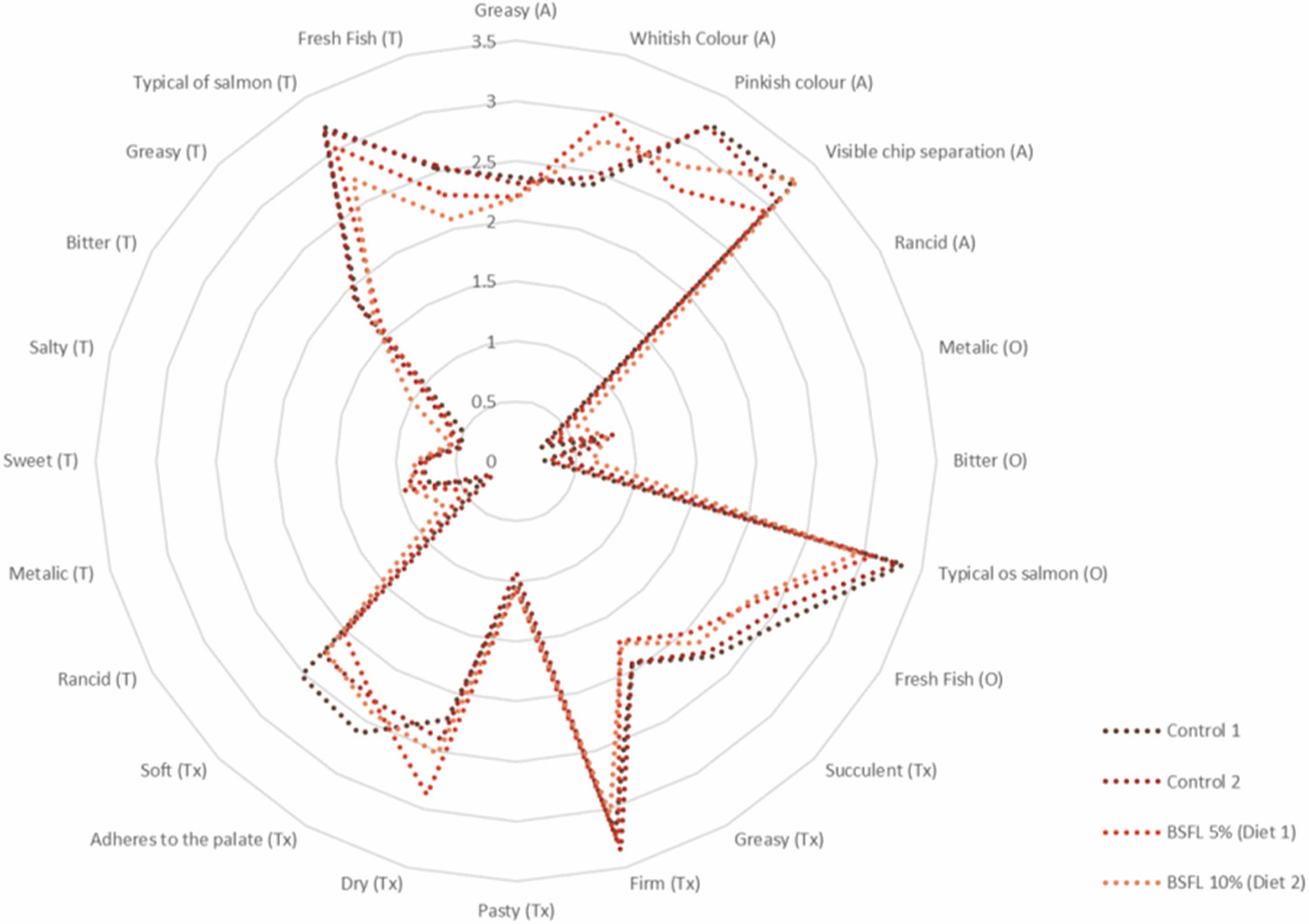
Our results show that the change in color values – an important indicator of overall value – between the control group and the groups with 5 and 10 percent defatted BSFL meal replacing plant-based protein sources suggests that the differences in fillet color among the dietary groups may only be noticeable to expert observers. It is possible that replacing plant proteins with BSFL meal has a lesser impact on fillet color compared to fishmeal replacement.
Various fish species are one of the main sources of dietary omega-3 (n-3) polyunsaturated fatty acids (PUFAs) required in a human adult healthy diet. The n-3 PUFA content in the fish fillet is greatly influenced by the fatty acid profile of the feed. In our salmon fillets, the content of eicosapentaenoic acid (EPA) and docosahexaenoic (DHA) acid were not significantly affected by the diets, but the inclusion of partially defatted BSFL meal up to 10 percent inclusion had a significant effect on the unsaturation ratio (changes in chemical structure) due to the higher content of total saturated fatty acids (SFAs) in insect meal-based diets. One of the reasons for the reduced unsaturation ratio in our study was the reduction of fish oil in the diet while using BSFL meal to make the diet iso-lipidic and iso-energetic.
The levels of different forms of vitamin E like tocopherol and tocotrienol were analyzed in the fillets. We observed no differences in the level of alpha-tocopherol between the three dietary groups. However, an increased level of beta-tocopherol was observed in BSFL at 10 percent inclusion. Higher deposition of non-alpha-tocopherol isoforms in fish fillets adds value to the product because the potential health benefits of tocotrienols in the human diet can include potential blood cholesterol-lowering effects, anti-cancer properties, cardio-protective benefits and protection against neurodegeneration and stroke. These higher levels of beta-tocopherol could be attributed to the presence of chitin in insect meals.
Increases in zinc and iron levels were observed when salmon were fed BSFL meal at up to 10 percent compared to the control diet. Plant-based ingredients are known to contain antinutrients which can decrease mineral availability due to their high binding affinity for metal ions. Thus, the higher level of zinc and iron observed in the current study might be the result of the reduction of plant-based ingredients in the BSFL diets.
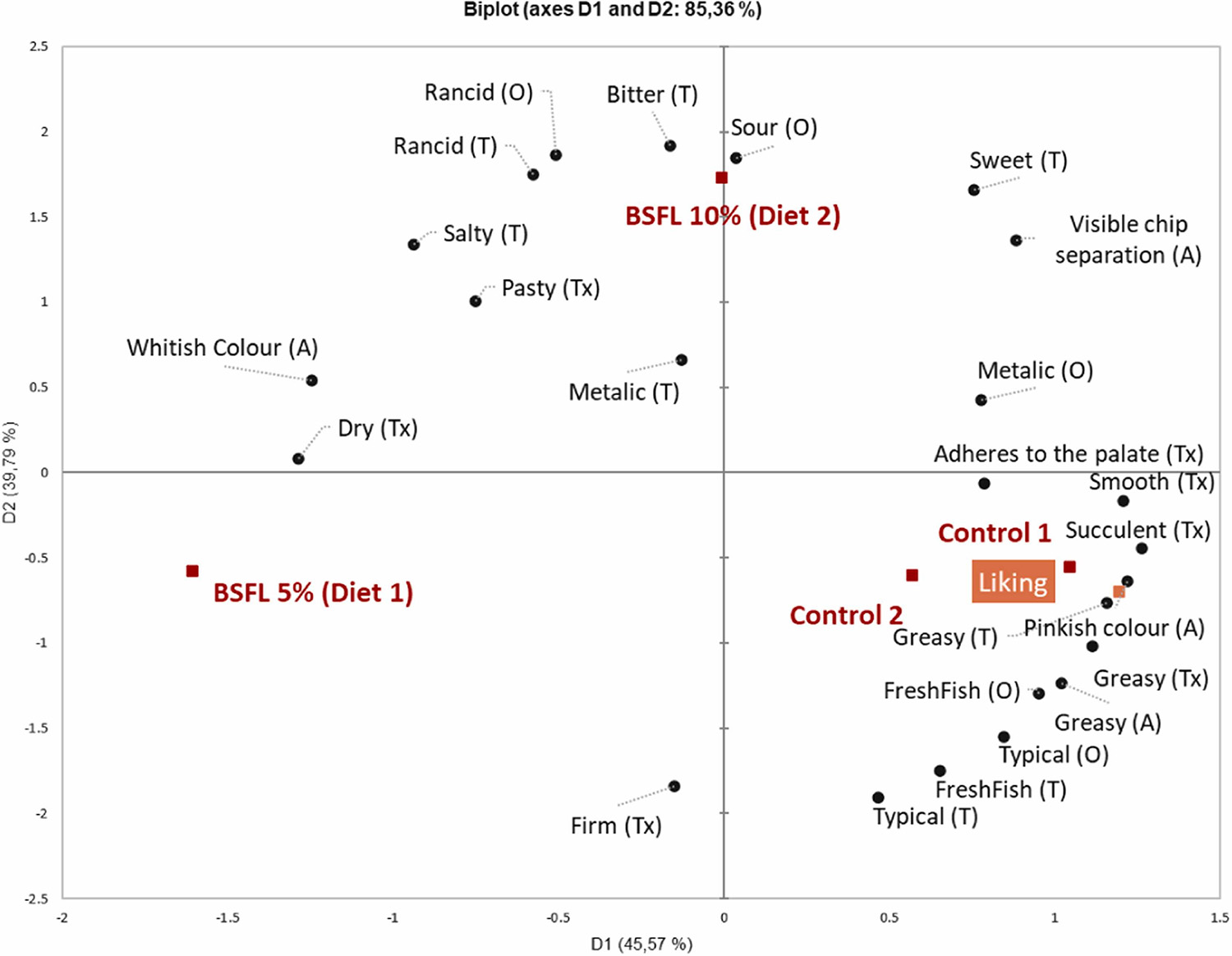
Any modification in the fillet fatty acid profile can directly influence the flavor volatile compound of the fillet. In our study, the fillet fatty acid profile was modified due to the dietary inclusion of BSFL meal, which may have contributed to some off-flavor in BSFL-fed salmon fillets. However, in other feeding trials, the fillet sensory attributes of salmonids were not affected by the dietary inclusion of BSFL meal in the diets. So far, little information is available on the potential modification of the flavor and aroma compounds in the fillets of farmed salmon in open sea cages fed dietary insect meal and this subject requires further studies in the future.
Perspectives
Results show that Atlantic salmon reared under a large-scale trial can be fed diets containing up to 10 percent BSFL meal for the whole seawater phase without affecting the physical and chemical fillet quality between salmon fed control and BSFL-based diets. In our study, dietary modifications had only marginal effects on certain fatty acids within the saturated fatty acid, while no major modifications for the total monounsaturated and polyunsaturated fatty acids.
The EPA+DHA levels were stable in the salmon fillet across all the dietary treatments, while the changes in nutritional indices and sensory properties were associated with the inclusion of BSFL in the diets of salmon. The use of insect-derived products can be a viable alternative protein source for aquafeeds and the upscaling and commercialization of insect-based aquafeeds can help support the development of sustainable feed ingredients in the coming years.
Now that you've reached the end of the article ...
… please consider supporting GSA’s mission to advance responsible seafood practices through education, advocacy and third-party assurances. The Advocate aims to document the evolution of responsible seafood practices and share the expansive knowledge of our vast network of contributors.
By becoming a Global Seafood Alliance member, you’re ensuring that all of the pre-competitive work we do through member benefits, resources and events can continue. Individual membership costs just $50 a year.
Not a GSA member? Join us.
Author
-
Dr. Ikram Belghit
Corresponding author
Institute of Marine Research, P.O. Box 1870 Nordnes, 5817 Bergen, Norway
Tagged With
Related Posts
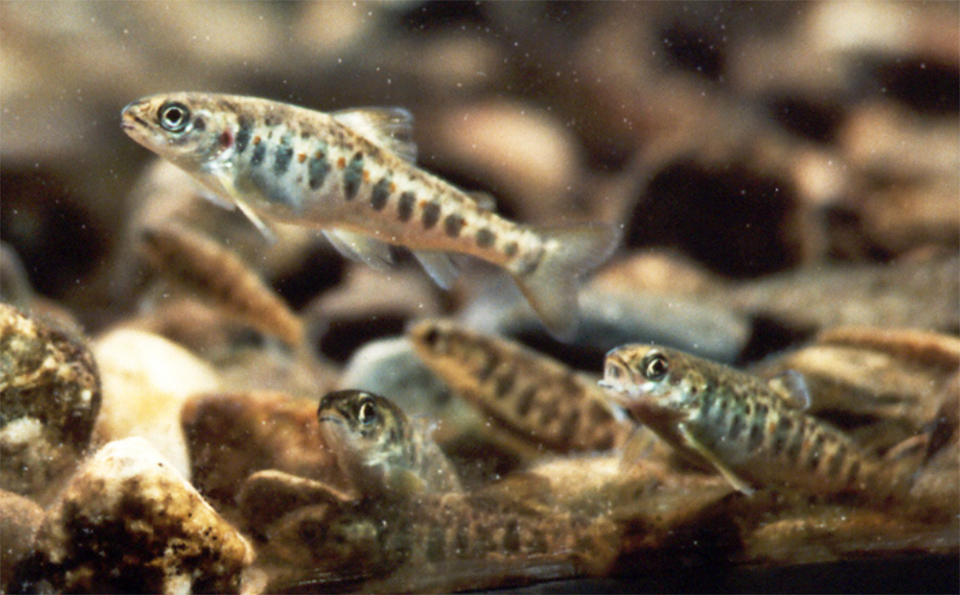
Health & Welfare
Effect of juvenile Atlantic salmon diets with different levels of PUFAs
Study investigates blood and muscle changes in young Atlantic salmon when fed diets containing different amounts of polyunsaturated fatty acids, or PUFAs.
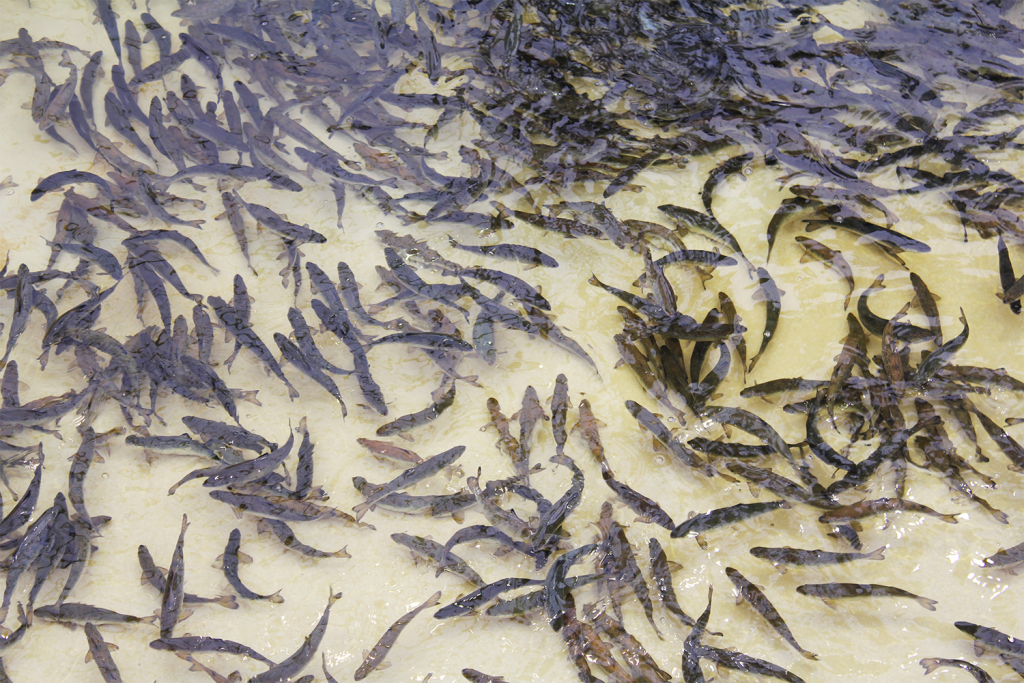
Fisheries
The diet of wild Atlantic salmon post-smolts has gone largely unchanged for 20 years
A well-documented ecological regime shift in the Northeast Atlantic did not have a large impact on salmon post-smolts’ diets in Norwegian fjords.
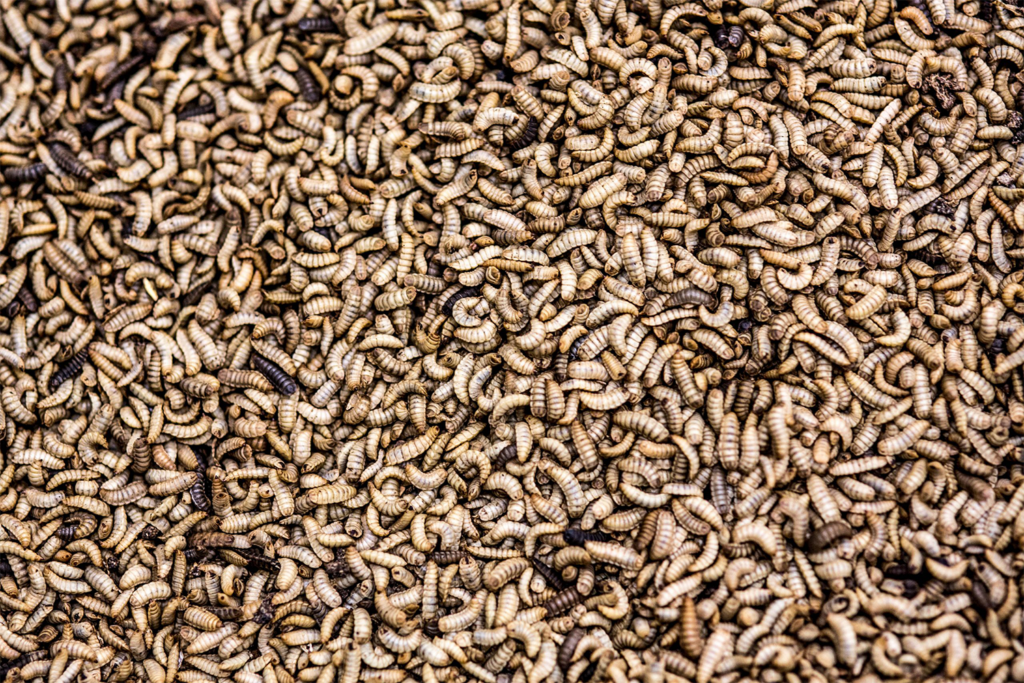
Aquafeeds
New U.S. black soldier fly innovation facility is Innovafeed’s first step into North America
Performance at the $10 million black soldier fly innovation and research center in Illinois will help Innovafeed determine direction on a new continent.
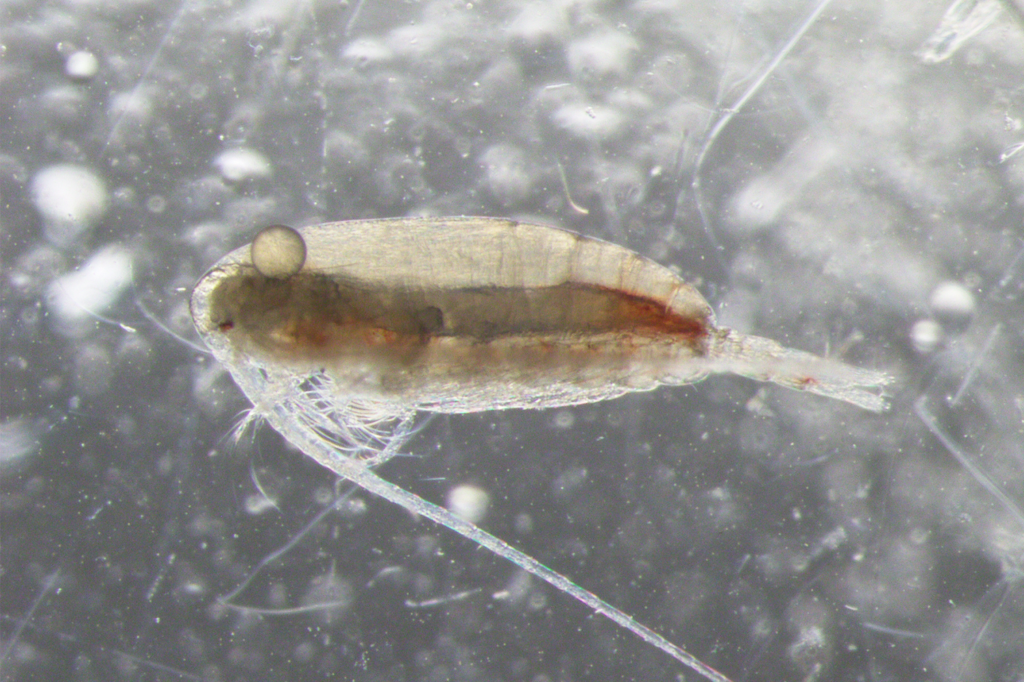
Aquafeeds
Effect of copepod hydrolysate dietary inclusion on feed attractiveness for Pacific white shrimp
A novel protein hydrolysate from the zooplanktonic copepod Calanus finmarchicus can increase the attractiveness of Litopenaeus vannamei diets.



